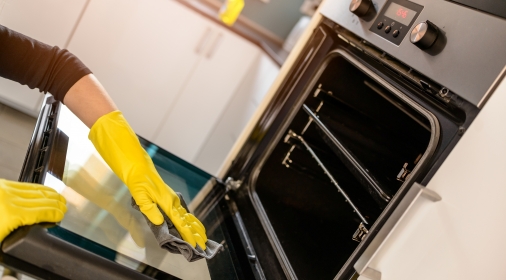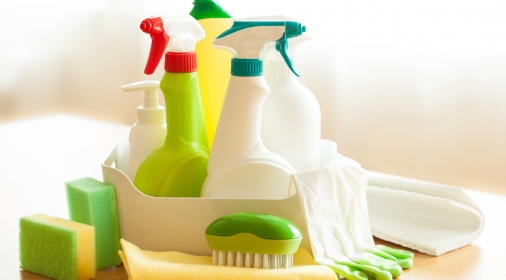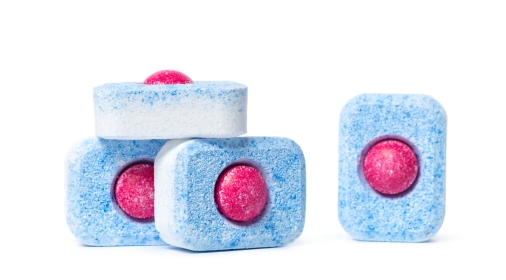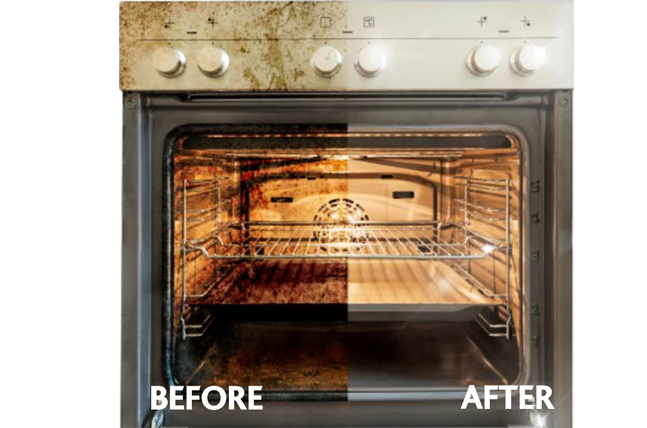How to Clean an Oven: The Ultimate Guide
Cleaning your oven tends to be one of the most avoided jobs in the kitchen. We often put it off, dreading the scrubbing and stubborn grease, but leaving it too long can lead to more than just a dirty appliance. From fire hazards to strange smells and inefficient cooking, a neglected oven causes bigger problems over time.
Fortunately, it doesn’t have to be so daunting. Whether you’re looking for the best way to clean an oven, want to know how to clean an oven without scrubbing, or need oven cleaning hacks to save time, this is the ultimate guide. We’ll walk you through every step — and help you keep it clean for longer.
Why Should You Clean Your Oven?
It’s easy to ignore the grime building up in your oven. After all, it’s hidden behind a door and isn’t affecting your cooking — or is it?
Dirty ovens can be dangerous and can impact performance and pose risks. Food debris and grease can cause excessive smoke, reduce cooking efficiency, and even create a fire hazard. That burnt-on gunk also affects flavour and may shorten your oven’s lifespan.
Here’s what can happen if you avoid cleaning it:
- Visible discolouration and stubborn stains
- Grime buildup on the oven glass
- Unpleasant odours and smoky output
- Fire risks from burnt food
- Reduced oven lifespan and efficiency
How to Know When Your Oven Needs Cleaning
If you’re wondering how do you clean your oven and when should you bother, the signs are fairly easy to spot. Watch for:
- Smoke or strong smells when heating the oven
- Food cooking unevenly or taking longer than usual
- Grease visible on the door or interior walls
- Baked-on food or blackened spots on racks and trays
When these signs appear, it’s time for a deep clean.
How Often Should You Clean Your Oven?
How frequently you clean your oven depends on how often you use it.
If you cook occasionally (once or twice a week), a thorough clean every 3–6 months might be enough. If your oven is in regular use, aim to clean it every couple of months — or monthly if you cook daily or roast frequently.
A good habit is to wipe spills immediately after the oven cools and give it a light monthly clean. This helps avoid larger, more time-consuming cleans later.
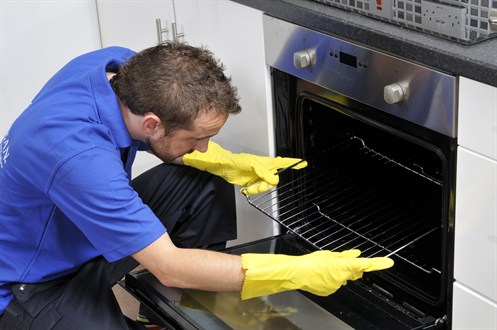
What You’ll Need to Clean an Oven
Before you get started, gather everything you need for a safe and effective clean:
- Oven cleaner (or bicarbonate of soda and vinegar for a natural method). Read our guide on the UK’s best oven cleaners.
- Rubber gloves
- Scourer and sponges
- Cloths or paper towels
- Resealable bags (for soaking racks)
- Kitchen towels (to protect the floor)
- Optional: old toothbrush or scraper for corners
How to Clean an Oven: Step-by-Step Guide
Cleaning the oven properly means taking it step by step. This ensures every part — from the glass to the racks — is spotless.
Step 1: Preparation
Switch off the oven at the mains before cleaning, and allow it to cool completely. Wear gloves to protect your skin, and open windows to ventilate the space.
Remove any loose crumbs or burnt food using a dry cloth or small brush.
Step 2: Cleaning the Oven Racks
Oven racks are often the greasiest part. To make them easier to clean, soak them first. You can do this in two ways:
- Place them in a large plastic bag with oven cleaning solution and leave overnight.
- Soak them in a bathtub or sink filled with hot water and washing-up liquid for several hours (add biological washing powder for stubborn grease).
After soaking, use a scourer to remove any residue. Rinse and dry completely before returning them to the oven.
For more information and tips read our guide on How to clean your oven racks.
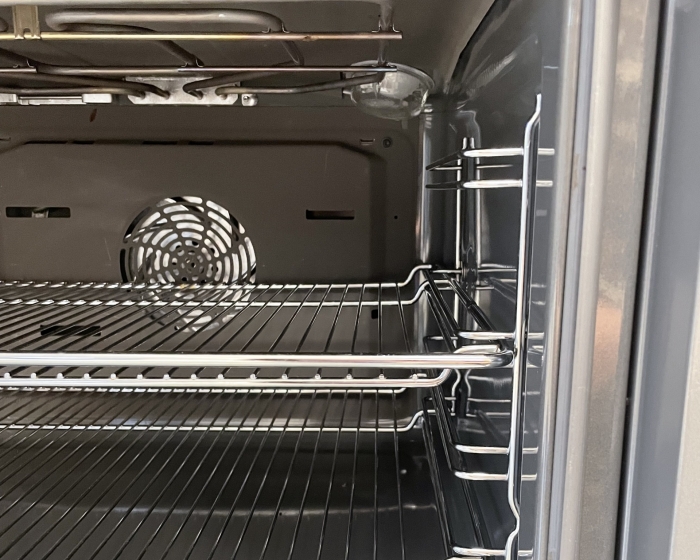
Step 3: Cleaning Inside the Oven
This is where it gets messy — but rewarding. Read all safety instructions on your oven cleaner before starting.
Apply the cleaner to all interior surfaces (avoiding the fan or any electrical parts) and leave it to sit for the recommended time. Then, use a sponge to scrub away the grease and residue. Wipe clean with a damp cloth, and repeat if needed for stubborn areas.
If you prefer a natural method, try this:
- Mix ½ cup of bicarbonate of soda with a few tablespoons of water to make a paste.
- Spread the paste across the oven’s interior, avoiding electrics.
- Leave overnight, then spray white vinegar on the surfaces.
- Wipe away the foam and repeat if necessary.
This is a great option if you’re searching for how to clean an oven without scrubbing too hard — though tough stains may take a few tries.
Step 4: Cleaning the Oven Glass
The oven door glass builds up residue quickly, but it’s usually easier to clean than the interior.
Lay the door flat and apply either regular oven cleaner or a dedicated glass product. After a few minutes, scrub gently with a sponge. An old toothbrush works well around corners and hinges. Wipe and dry with a cloth.
Hack: Use shaving foam to break down cloudy residue on the inside of the door — it works surprisingly well.
If you still have stains or food between the oven windows, read our guide to cleaning between your oven door glass.
Step 5: Cleaning Trays and Accessories
Take any baking trays or removable parts and soak them in hot water with biological washing powder. Leave them for several hours or overnight, then scrub and rinse thoroughly. For a final touch, run them through the dishwasher if suitable.
For more information read our guide on how to clean oven trays.
Easy Oven Cleaning Hacks
Want to speed things up or make cleaning easier? Try these oven cleaning hacks:
- Microwave a bowl of water and lemon juice to create steam — then wipe down the oven while warm.
- Use a damp dishwasher tablet to scrub baked-on food from the oven base.
- Place a heatproof bowl of water in the oven at 180°C for 20 minutes before cleaning — it softens grime.
- Use a car windscreen scraper to gently lift off carbon deposits.
These small tricks can help if you’re wondering how to quickly clean an oven between deeper cleans.
How to Clean the Hob
Don’t forget to clean the hob. Start by removing burners or plates and clearing away any food debris.
Apply hob cleaner or soapy water and scrub in circular motions. Use a cloth or toothbrush to clean aro
und edges, controls and pilot lights. Dry thoroughly and replace all parts once clean.
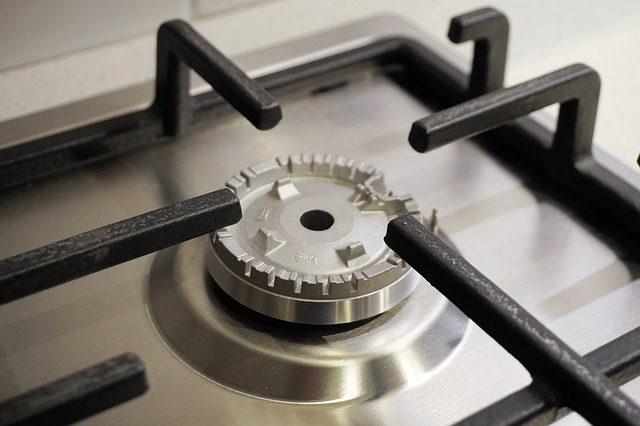
Reassembling the Oven
Once all parts are dry and residue-free, reassemble your oven. Double check seals and make sure all components are fitted securely. Leave the door open to ventilate any lingering fumes.
How to Maintain a Clean Oven
A sparkling oven feels great — but how do you keep it that way?
Here are some oven maintenance tips:
- Line the oven base with reusable oven liners to catch drips.
- Wipe down spills immediately after use (once the oven is cool).
- Clean the oven lightly once a month with vinegar or mild detergent.
- Avoid aluminium foil on oven floors — it can damage the interior.
- Check seals and hinges every few months to ensure they’re functioning properly.
Routine maintenance not only keeps your oven looking good but helps prevent damage that’s expensive to fix later.
Free Oven Cleaning Quote
Here at Ovenclean, we have a network of specialist oven cleaners who work with all types of oven brands and models, including range and Aga cookers. We also offer a selection of additional cleaning services while we are there, including the hob, extractor hood and microwave.
Our professional oven cleaners are fully equipped to clean your oven and get it sparkling. Call us on 0800 840 7127, or complete our online form for your free quote.

